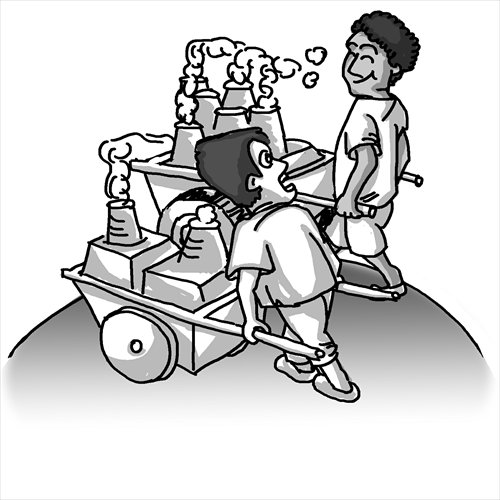HOME >> BUSINESS
India poised for its own reform and opening era
By Zhang Tingbin and Zhang Wei Source:Global Times Published: 2014-7-17 17:38:01
Restructuring efforts should focus on manufacturing

Illustration: Lu Ting/GT
Since Narendra Modi became the Prime Minister of India, much talk has been devoted to whether the country's newly-installed leader can replicate on a national scale the economic successes he achieved during his tenure as chief minister of the western state of Gujarat.
India's last great age of development began in the early days of the 21st century and lasted until the onset of the global financial crisis in 2008. Indeed, during the three-year period starting in 2005, annual GDP growth in India exceeded 9 percent. This was followed by another two years of sustained momentum thanks to stimulus measures designed to keep the wheels spinning. By 2011 though, India's prospects had waned considerably, with economic growth dropping at times below 5 percent.
The country's economic structure is partially to blame for this rapid slowdown. Much of the country's productive capabilities are centered on consumption, which accounts for almost 70 percent of total GDP. Other big sectors include services and high-technology. This focus has constrained investment in manufacturing, pillar industries and infrastructure.
Such shortcomings have become even more apparent since 2011, with the country's rapidly dwindling capital stock highlighting India's international payment imbalance and dependence on imported industrial products. It wasn't long before a vicious cycle set in as a depreciating rupee and severe inflation further slammed the brakes on investment.
Concerning monetary policy, the dominant theory in India is that fighting inflation must take priority in efforts to stabilize the economy. Hefty deficits in India's balance sheet and mounting debt levels have ramped up the cost of funding. Whatever lies ahead for India's sluggish economy will hinge on its ability to implement reforms that put its citizens into productive manufacturing jobs.
Another potential risk for India is its vulnerability to external pressures, which have already played a large role in weakening the rupee. The country's current account is deep in the red and capital flows continue to fluctuate wildly. Additionally, India's foreign debt stands at over $440 billion, about 20 percent of its GDP and larger than its foreign exchange reserves.
Many features of India's current economic predicament mirror those seen in China back in the 1980s: an overabundance of labor, cheap land prices, poor infrastructure, a severe imbalance in foreign trade and an immature financial market. But after three decades of infrastructure development and manufacturing expansion, China's utilization of resources and labor has nearly reached its natural limit.
India also has many of the same advantages China had then - its population is still relatively young and over the next four decades its labor force is expected to increase by 40 percent.
Indeed, the positive economic changes that Modi is credited for spearheading in Gujarat came about as a result of developing the local manufacturing sector. To a certain extent, the successes witnessed there are similar to those achieved in China's Guangdong Province during the early days of its reform and opening-up era.
Looking ahead, many now hope that the vigorous economy of Gujarat will serve as a model for the rest of India. Recent shifts in the country's political landscape could clear the way for such a transformation. The Bharatiya Janata Party, led by Modi, seized a landslide victory that saw its members take 282 out of 545 seats in the latest parliament election, providing a solid foundation for Modi's executive power.
Looking at India's tentative development blueprint over the next five years, many see similarities with the plan China used to develop its economy some three decades ago. At the time, leaders in China focused on policies that would attract overseas investment, create globally oriented manufacturing hubs and develop infrastructure through international cooperation.
To put it briefly, India seems to possess many of the strengths that China had when it first embraced the world economy so many years ago. What's more, India has the added benefit of democratic supervision. If Modi can harness the advantages, it's entirely possible that India could claim China's mantle as the world's factory.
The authors are founder and senior research fellow of CNYUAN Think Tank, a Beijing-based leading financial consultancy. bizopinion@globaltimes.com.cn
China Business News
Posted in: Comments